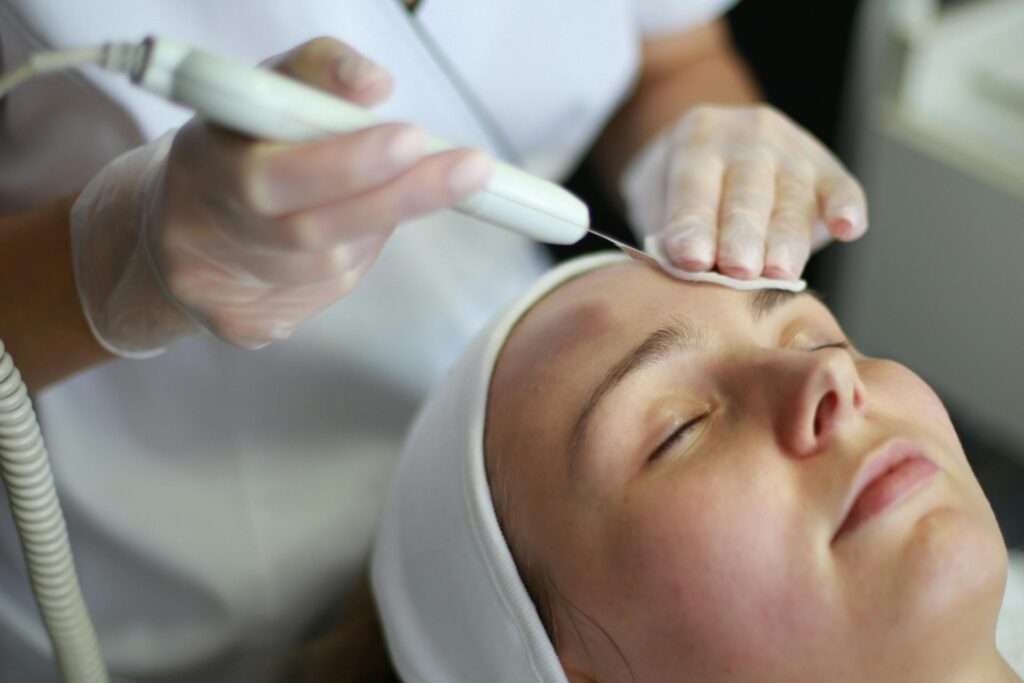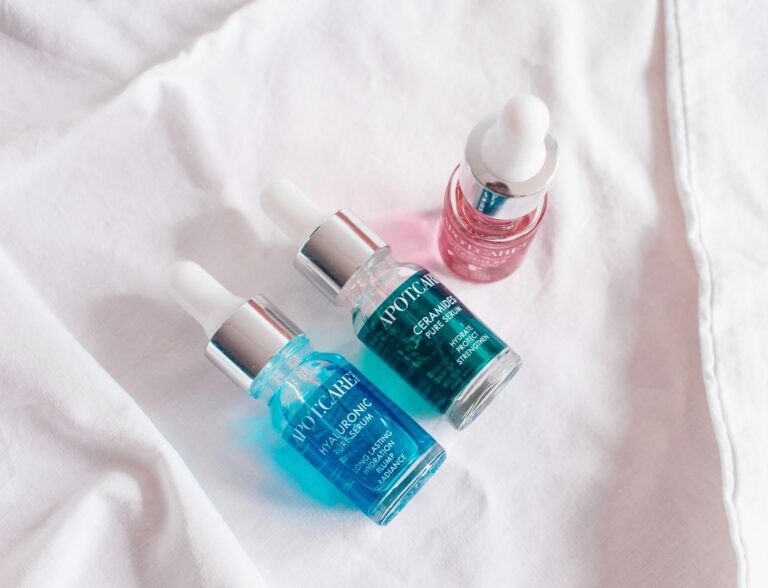
Dermal fillers have gained significant popularity as a solution for individuals seeking to enhance their facial features and attain a more youthful appearance. With a variety of types available, each presenting distinct benefits, it is important to understand how dermal fillers can work for you.
This article delves into the most commonly used types of dermal fillers in the UK, discussing their applications, benefits, potential risks, and what one can expect during and after treatment. Whether you are curious about the procedure or exploring alternatives, this resource will provide you with all the information you need.
What Are Dermal Fillers?

Dermal fillershave become a widely accepted option in cosmetic dermatology, offering effective solutions for individuals seeking to enhance their facial appearance without undergoing invasive surgery. This rise in popularity reflects the evolution of dermal fillers, which have advanced significantly in both formulation and technique to provide safer, more natural-looking results.
These injectable treatments typically contain substances such as hyaluronic acid and collagen, which work to restore facial volume, diminish wrinkles, and improve skin hydration.
As non-surgical treatments continue to gain traction in the cosmetic industry, dermal fillers have seen substantial growth in demand across the UK, helping many individuals achieve their aesthetic goals for rejuvenation and beauty enhancement.
What Are the Different Types of Dermal Fillers?
There is a wide range of dermal fillers available today, each crafted with unique properties and intended purposes. Among the most popular options are hyaluronic acid fillers, such as Juvederm and Restylane. These fillers are well-regarded for their ability to enhance facial volume and hydration while delivering natural-looking results.
Additionally, biostimulatory fillers like Sculptra and Radiesse work to stimulate collagen production, making them ideal for those seeking longer-lasting effects. Some products utilise Vycross technology, which optimises the longevity and smoothness of the filler, providing more tailored treatment options.
Hyaluronic acid fillers are particularly appreciated for their ability to blend seamlessly with the skin, making them suitable for delicate areas such as the lips and under-eye hollows. In contrast, biostimulatory fillers, which exert their effects gradually, can effectively address deeper folds and volume loss in the cheeks.
In terms of longevity, hyaluronic acid fillers typically last between six months to a year, while biostimulatory fillers may provide results extending beyond two years, depending on individual factors and treatment areas. This variety ensures that individuals can make informed choices based on their specific cosmetic goals and the desired duration of results.
What Are the Most Popular Types of Dermal Fillers in the UK?
In the UK, some of the most sought-after types of dermal fillers include lip fillers, cheek fillers, and specialised treatments featuring well-known brands like Juvederm and Restylane.
These cosmetic procedures are particularly popular due to their effectiveness in enhancing facial features, improving symmetry, and delivering pleasing aesthetic results. Clinics throughout the UK are experiencing a rising demand for these treatments as more individuals turn to non-surgical options for rejuvenation and facial contouring.
What Are the Main Differences Between the Most Popular Types of Dermal Fillers?
While Juvederm, Restylane, Sculptra, and Radiesse are all well-regarded dermal fillers, they have distinct differences in their composition, longevity, and specific uses. For example, both Juvederm and Restylane are primarily made from hyaluronic acid, providing immediate volume and hydration. In contrast, Sculptra is notable for stimulating collagen production over time, resulting in a gradual increase in facial volume.
Radiesse stands out by offering both immediate volume and long-term collagen stimulation, making it a unique option among these fillers.
When exploring these options, it’s important to recognise that Juvederm typically lasts between six to twelve months, while Restylane can offer similar durations, with its various products designed for different facial areas. Sculptra, on the other hand, has an impressive longevity of up to two years, thanks to its poly-L-lactic acid formulation that encourages ongoing collagen production. Radiesse generally delivers results that last around a year, and potentially even longer due to its collagen-stimulating properties.
Patients should also be informed about the potential side effects associated with these fillers. While bruising and swelling are common across all options, Sculptra may, in some instances, lead to the development of nodules. Engaging in a thorough discussion with a qualified professional can give the power to individuals to make informed choices that align with their aesthetic goals and lifestyle.
What Areas of the Face Can Be Treated with Dermal Fillers?

Dermal fillers offer a range of treatment options for different areas of the face, making them an appealing choice for individuals seeking to enhance their overall facial balance and harmony.
Common treatment areas include the lips, cheeks, and nasolabial folds, where fillers can effectively restore volume, minimise age-related changes, and enhance facial contouring.
Experienced injectors are adept at addressing asymmetry and delivering customised treatments that align with each person’s unique aesthetic goals.
What Are the Benefits of Using Dermal Fillers for Facial Rejuvenation?
The advantages of using dermal fillers for facial rejuvenation are quite extensive, which is why many individuals opt for these non-invasive aesthetic solutions. These treatments deliver immediate results, enhancing volume and hydration to promote a more youthful appearance.
Dermal fillers are well-regarded for their safety protocols, minimal downtime, and high levels of patient satisfaction, all of which reinforce their position in the cosmetic industry.
Patients often express a sense of revitalisation following their sessions, frequently commending the natural-looking results that dermal fillers can achieve. In contrast to surgical options that may necessitate a lengthy recovery, these injectables enable individuals to resume their daily activities almost immediately.
Research has shown that the effects of dermal fillers can be long-lasting, with many users enjoying their results for several months. This exceptional combination of effectiveness, convenience, and stringent safety standards makes a persuasive case for anyone exploring cosmetic enhancements, ensuring they leave the clinic with a refreshed sense of confidence.
Are There Any Risks or Side Effects of Using Dermal Fillers?
While dermal fillers are generally considered safe, it is important to recognise that potential risks and side effects can occur, including bruising, swelling, and, in rare instances, filler migration.
Addressing the myth about dermal fillers being entirely risk-free, patients should be well-informed about these potential issues and prioritise selecting qualified medical professionals for their injectable treatments to minimise complications. Additionally, being aware of signs of asymmetry or other post-treatment concerns is essential for effective aftercare.
It is also important to note that allergic reactions, infections, and nodules can happen, though they are infrequent. Therefore, verifying the practitioner’s qualifications, including board certification and experience, is crucial to reducing the likelihood of complications.
After the procedure, individuals are advised to follow recommended aftercare guidelines, such as avoiding strenuous exercise, excessive sun exposure, and alcohol for at least 24 hours.
If any adverse effects arise, such as prolonged swelling or unusual pain, seeking prompt medical advice is critical to addressing complications quickly and effectively.
How Long Do Dermal Fillers Last?
The longevity of dermal fillers can vary significantly based on several factors, including the type of filler used, the area being treated, and individual characteristics such as metabolism and lifestyle. Typically, hyaluronic acid fillers like Juvederm and Restylane last between six months and a year. In contrast, biostimulatory fillers like Sculptra may provide longer-lasting results due to their collagen-stimulating properties.
The duration of these treatments is influenced by various factors, including the patient’s age, skin type, and how well they follow post-treatment care guidelines. For instance, individuals who often expose their skin to sunlight or have a fast metabolism may find that their fillers fade more quickly.
To maintain results over time, maintenance treatments are often suggested. Understanding what to expect can help patients appreciate the gradual enhancement of their appearance.
To maximise the effects of these treatments, it is advisable for individuals to adhere to their provider’s aftercare instructions, maintain a healthy lifestyle, and consider touch-ups as necessary.
What Is the Procedure for Getting Dermal Fillers?

The process of obtaining dermal fillers typically begins with a comprehensive consultation, during which practitioners evaluate the patient’s needs and aesthetic aspirations. Following this assessment, the injection phase employs specific needle techniques designed to ensure both precision and comfort. Aftercare instructions are also provided to support recovery and optimise results.
During this initial consultation, the qualified practitioner will review the client’s medical history, any previous treatments, and potential allergies to ensure a safe and satisfactory experience. Once a treatment plan is mutually agreed upon, the practitioner will prepare the treatment area by cleansing it thoroughly and may apply a topical anaesthetic to minimise any discomfort.
The injections are administered using sterile techniques, with careful consideration of the facial anatomy to achieve balanced and natural-looking enhancements. After the procedure, it is essential for individuals to adhere to the aftercare instructions provided, which often include avoiding strenuous activities and excessive sun exposure. This adherence is vital for maximising the benefits of the treatment while ensuring a smooth healing process.
What Is the Recovery Process Like After Dermal Filler Injections?
The recovery process following dermal filler injections is typically quite straightforward, with most patients experiencing minimal downtime. While common side effects such as bruising and swelling may occur, they generally resolve within a few days.
Proper post-treatment care and adherence to aftercare instructions can greatly enhance recovery and ensure optimal results.
Patients often discover that managing these effects is quite feasible with a few simple strategies. For instance, applying cold compresses to the treated areas can help alleviate swelling and discomfort. Staying hydrated and avoiding blood thinners, such as aspirin and alcohol, for 24 hours after the treatment can also reduce the risk of bruising.
It is essential to follow the provider’s guidelines regarding physical activity and make-up application, as this can support the healing process. By taking the right approach to aftercare, individuals not only improve their comfort during recovery but also increase their likelihood of achieving the desired outcomes from their filler treatment.
What Are the Costs of Dermal Filler Treatments in the UK?
The cost of dermal filler treatments in the UK can vary significantly based on several factors, including the type of filler used, the clinic’s location, and the practitioner’s qualifications. On average, patients should expect to pay between £200 and £500 per syringe, with additional consultation fees potentially applicable depending on the clinic’s policies.
The clinic’s reputation, the injector’s expertise, and the specific areas being treated also play crucial roles in determining the overall costs. For example, treating areas that require more intricate work, such as the lips or under-eye regions, may result in higher fees compared to treatments for more expansive, less complex areas.
It is important for individuals considering dermal fillers to evaluate these costs in relation to alternative methods, such as Botox or surgical options, which may offer varying degrees of longevity and effectiveness. Investing in aesthetic enhancements requires not only a financial commitment but also thoughtful consideration of the potential outcomes and benefits.
Educating patients about the long-term value of these procedures can facilitate informed decisions, ultimately helping them feel more confident in their aesthetic choices.
Are There Any Alternatives to Dermal Fillers for Facial Rejuvenation?

Indeed, there are several alternatives to dermal fillers for individuals seeking facial rejuvenation. Options such as PDO threads, Botox, fat transfer, and thread lifts are available.
Each of these treatments offers a distinct approach to enhancing facial aesthetics and addressing signs of ageing. This variety allows individuals to consider different choices based on their specific needs and preferences.
What Are the Differences Between Dermal Fillers and Botox?
Dermal fillers and Botox are both widely recognised options for facial rejuvenation, yet they serve different purposes and function in distinct ways. Dermal fillers are primarily utilised for enhancing volume and restoring facial contours, while Botox is focused on wrinkle reduction by temporarily relaxing the muscles responsible for dynamic facial expressions.
These treatments vary significantly in their applications and mechanisms of action. Dermal fillers, which are often composed of hyaluronic acid or other biocompatible substances, are injected into specific areas to plump the skin and smooth out lines, effectively adding volume to areas such as the cheeks, lips, and nasolabial folds.
Conversely, Botox employs a potent neurotoxin that blocks the signals between nerves and muscles, minimising movement and helping to soften expression lines, particularly around the forehead and eyes.
When considering aesthetic goals, individuals looking to restore lost volume may find dermal fillers to be a suitable option. In contrast, those aiming to reduce wrinkles associated with facial expressions may benefit more from Botox injections.
Each treatment offers its own unique advantages, and understanding these differences is essential for making informed decisions that lead to optimal results.
What Are the Differences Between Dermal Fillers and Fat Transfer?
When examining the differences between dermal fillers and fat transfer, it is important to note several key distinctions, particularly in terms of treatment methodology and longevity.
Dermal fillers provide immediate volume enhancement through injectable substances. In contrast, fat transfer involves the process of harvesting fat from another area of the patient’s body and subsequently injecting it into the desired facial area. This approach can yield a more natural and long-lasting volume but does require a surgical procedure.
The decision between these two options often depends on individual patient preferences regarding aesthetics and desired outcomes. Dermal fillers offer a quick, minimally invasive solution that delivers instant results; however, they usually necessitate repeat treatments every few months to maintain those results.
On the other hand, while fat transfer is a surgical procedure with a longer recovery time, it can produce results that last for years and appear more organic, as the body tends to accept its own fat.
Patients should carefully consider these differences, taking into account factors such as their personal pain tolerance, the invasiveness of the procedures, and how they envision their aesthetic goals evolving over time.
What Are the Differences Between Dermal Fillers and Thread Lifts?
Dermal fillers and thread lifts are both effective treatments for enhancing facial aesthetics, but they employ different methods. Dermal fillers work by injecting volume into specific areas of the face to enhance contours and fill in wrinkles.
In contrast, thread lifts utilise dissolvable threads to lift and tighten sagging skin, providing a more structural approach to facial rejuvenation.
This fundamental difference in technique results in varying outcomes and recovery times. With dermal fillers, individuals typically experience immediate effects, enjoying instant plumpness and rejuvenation. On the other hand, thread lifts may take a few weeks for their full lifting effects to become apparent, as the threads stimulate collagen production over time.
In terms of recovery, those who choose fillers often find that they can resume their normal activities almost immediately. In contrast, a thread lift may necessitate a few days of downtime due to temporary swelling or discomfort.
It is essential to evaluate the pros and cons of each treatment option. Dermal fillers offer versatility in addressing multiple facial areas but may necessitate more frequent touch-ups. Meanwhile, thread lifts generally provide longer-lasting results but may not be suitable for all skin types.
Understanding these differences allows individuals to make informed decisions based on their unique aesthetic goals.
Frequently Asked Questions
What are the most popular types of dermal fillers used in UK treatments?
The most popular types of dermal fillers used in UK treatments include hyaluronic acid fillers, calcium hydroxylapatite fillers, and collagen stimulators.
What are hyaluronic acid fillers?
Hyaluronic acid fillers are made from a substance that naturally occurs in the body and helps to add volume and hydration to the skin. They are commonly used to fill in wrinkles and add volume to the lips.
What are calcium hydroxylapatite fillers?
Calcium hydroxylapatite fillers are made from a mineral-like compound that is found in bones and is biodegradable. They are commonly used to treat deeper wrinkles and add volume to the cheeks and temples.
What are collagen stimulators?
Collagen stimulators are fillers that promote the production of collagen in the skin, helping to add volume and improve skin elasticity. They are commonly used to treat wrinkles and add volume to the cheeks and chin.
How long do dermal fillers typically last?
The duration of dermal fillers varies depending on the type used, but on average, hyaluronic acid fillers last 6-12 months, calcium hydroxylapatite fillers last 12-18 months, and collagen stimulators can last up to 2 years.
Are there any risks or side effects associated with dermal filler treatments?
Like any cosmetic procedure, there are potential risks and side effects associated with dermal filler treatments. These may include bruising, swelling, redness, and in rare cases, infection or allergic reactions. It is important to choose a trained and experienced provider and follow all aftercare instructions to minimise these risks.






